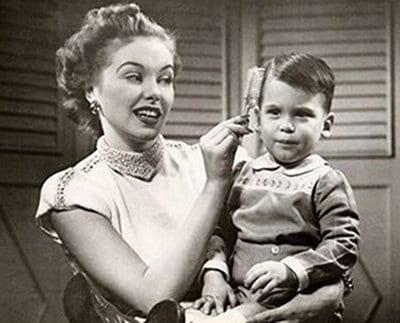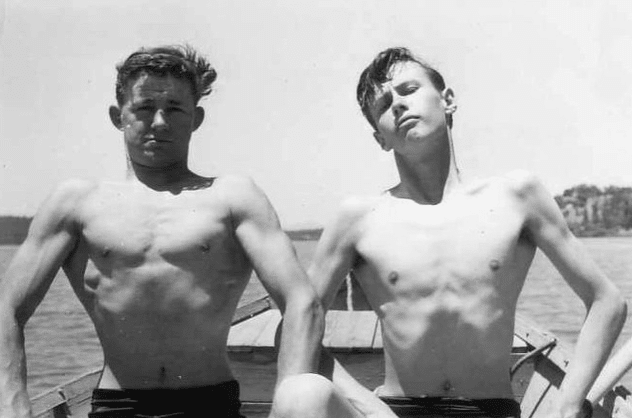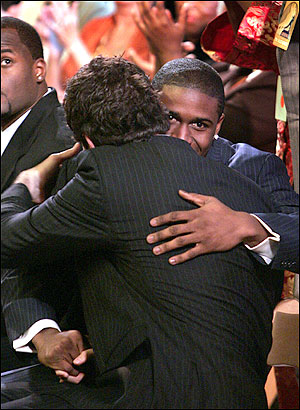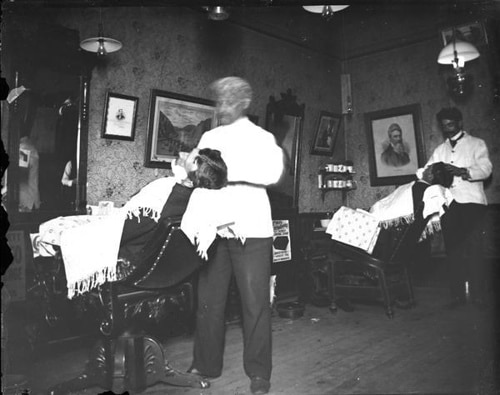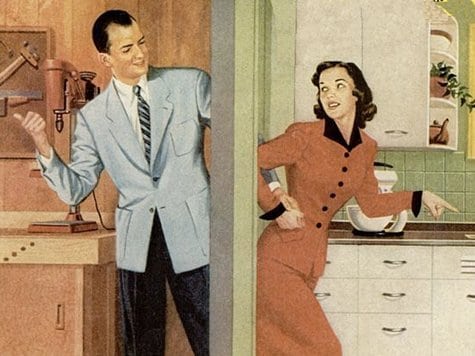
Once upon a time, the world belonged to men.
Literally.
Because men had exclusive power in both private and public life, they controlled their surrounding environment and the way in which space was designed and decorated. Consequently, the world was once a very masculine place.
Thankfully, we’ve made progress in the area of gender equality and women have brought their influence to bear in both the home and the workplace. However, as with many other areas of modern life, the pendulum has swung from one extreme to the other; instead of creating a world that’s friendly to both male and female space, we’ve created one that benefits female space at the expense of male space.
What’s behind the decline in male living space and the proliferation of female space? It’s actually a complex and interesting story that goes all the way back to 18th century. Below we’ll explore some of the factors that have contributed to the near eradication of male space in both public and private life.
Decline of Male Space in the Public Sphere
For most of humanity, the public sphere was solely a man’s domain. Up until as far as the 19th century, it wasn’t even appropriate for women to visit outside the home without a man accompanying her.
However, in the last 100 years, areas designated as male space have shrunk because of changes in attitudes towards gender and anti-discrimination laws.
In this section we discuss five public spaces that were once exclusively for men: the workplace, the bar, the barbershop, the gym, and the fraternal lodge/social club.
The workplace. Perhaps the largest male space in public life was the workplace. For many families in the West, the Industrial Revolution created a strict division of labor where men worked in a factory or office and women stayed home to take care of the children. If women did work, they largely did so in “female” industries like textile factories. As a result, the workplace was a predominately male space with rules and a culture that favored male sensibilities.
When the first women started to enter the workforce in greater numbers during the 1950s and 60s, many men saw it as an encroachment into their space and resorted to crude sexual harassment as a way to keep women “in their place.” Thanks to laws during the Civil Rights era and increased sensitivity and desire by businesses to create non-hostile workplaces, such harassment is seen for what it is and shunned by most males today.
The Bar. For centuries, a man could visit a bar and be in the exclusive presence of other men. Because drinking was seen as a corrupting influence on the “purity and innocence” of women, bars were completely off limits to ladies (exceptions were made for prostitutes, of course). Out of the presence of women and children, men could open up more and revel in their masculinity over a mug of cold ale. However, the bar as a men’s only hangout would quickly see its demise during the dry years of Prohibition.
By banning alcohol, Prohibition forced drinking underground. Speakeasy owners, desperate to make a buck, accepted all drinkers into their establishments, regardless of gender. Moreover, the economic and political empowerment women experienced during the 1920s and 30s made drinking by women more acceptable. By the time Prohibition was repealed, the female presence at the local watering hole had become a common appearance.
World War II only further eroded the male exclusivity of bars and pubs. As more women entered the workforce, it became acceptable to socialize with their male co-workers in taverns and lounges after work.
Today, there aren’t many bars around that cater only to men (gay bars being an obvious exception). Instead, bars have become a place where the sexes come together to mingle and look for a special someone (even if just for the night.)
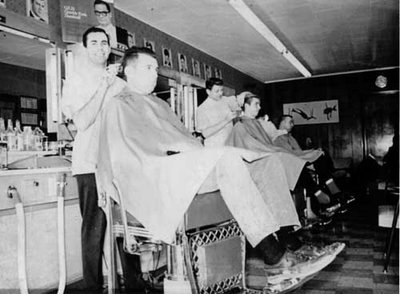
Barbershops. Back in the 19th and early 20th centuries, barbershops were bastions of manliness, and one could be found on every corner. At the barbershop, a man could get a sharp haircut, enjoy a relaxing shave, and take part in some manly banter with his barber and the other customers. Unfortunately, several factors led to the decline of barbershops. Perhaps the biggest factor was the rise of the unisex salon. Places like “SuperCuts,” which were neither beauty salons nor barbershops, catered to both men and women. Many states’ licensing boards accelerated this trend by ceasing to issue barber licenses altogether in favor of offering a unisex “cosmetologist” license to all those seeking to enter the hair cutting profession.
Unlike the bar or workplace, the barbershop hasn’t been infiltrated by women; most ladies prefer the salon and wouldn’t dream of having Old George take the clippers to their head. Rather, barbershops have simply become harder to find. Even if you do find one, don’t be surprised if Old George has been replaced with Georgia.
Boxing Clubs and Gyms. Like bars, boxing clubs and gyms were once exclusively male-only haunts. In the time of women-free gyms, men could focus solely on building their bodies and not worry about impressing the ladies. They were dark, dingy places, that smelled of sweat and exhaustion. Free from the sound of Lady Gaga blasted over the speakers, the only noise was of grunts and the clanging of weights. However, in response to the women’s movement, many states and cities passed ordinances prohibiting male-only businesses and clubs. As a result, women advanced on gyms along with step classes and leotards.
Despite these anti-discrimination ordinances, many states have overlooked the proliferation of female-only gyms like Curves that have opened up across the country. Even when men bring lawsuits challenging these all-women establishments, they’re often dismissed. This unfortunate double standard has only aided in the decline of male space and the rise of female space.
Old school boxing clubs have also been in decline for several years. For many men growing up in the 1920s and 1930s, visiting the boxing gym as a boy was as normal as playing video games is for boys of today. The decline in the number of boxing gyms parallels the decline in the popularity of the sport itself. And some of the boxing clubs that are left have understandably looked to stay afloat by offering “boxing cardio” classes that appeal to women. However, the popularity of mixed martial arts among young men may spur the creation of new male space in the form of MMA gyms. Few females have found an interest in learning the ground and pound.
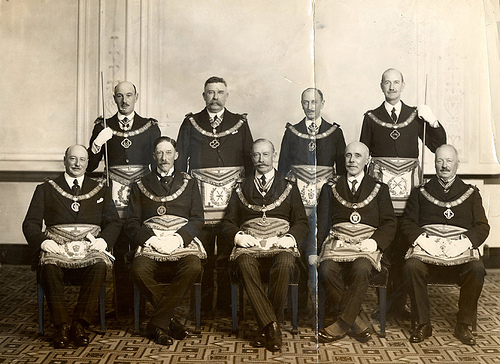
Fraternal Lodges and Social Clubs. Fraternal lodges and all male clubs and restaurants have a long and storied history in the United States and in other countries in the West. During the 19th and early 20th centuries, men flocked to fraternal lodges, like the Freemasons and the Odd Fellows, in order to take part in male fellowshipping. At one time in American history, 1 in 4 men belonged to a fraternal lodge of some sort. However, by 1950 membership began to decline as the demands of family life and work increased, leaving men little time for lodge life. Moreover, under pressure from women’s rights groups, some lodges allowed women to join their ranks. But for the most part fraternal lodges remain all-male. Their biggest problem is just recruiting new and younger members.
In addition to fraternal lodges, male only clubs and restaurants served as a place where a man could enjoy a nice rib-eye with their bros and get candid advice on their career and family life. But male-only clubs would start to feel the squeeze when the U.S. Supreme Court held in 1987 that states and cities may constitutionally ban sex discrimination by business-oriented private clubs. With this green light from the Court, many states and cities started cracking down on male-only clubs and restaurants. New York City was especially vigorous in prosecuting male-only clubs. Perhaps the most famous instance of a once male-only club being forced to open membership to women was the New York Athletic Club. Founded in 1868, the club contained dining rooms, bars, an indoor pool, and a block long gym. Facing legal pressure, the New York Athletic Club opened it’s membership to women in 1989 with mixed feelings on the part of members. Despite the legal and societal pressure, a few-male only clubs still exist in the U.S.
Decline of Male Living Space in the Home
Paralleling the decline in male space in public was the decline of male space in the domestic sphere. This perhaps was even more dramatic for men because, well, it hit so close to home. A man was once king of his castle, but in a blink of an eye he was dethroned. Here’s a brief primer on how it went down.
The Industrial Revolution: The Beginning of the End of Male Space
Before the Industrial Revolution, you could find most men working in or around the home. This was a time of self-sufficient small farmers and noble artisans. A man used his home as his place of business and, consequently, homes were designed to accommodate the needs of the dirty work of farming, blacksmithing, and leatherworking. When you work every day in dirt and grime, you can’t worry about taking off your boots so you don’t soil the rug. That just slows down the work!
Additionally, the home design luxuries we take for granted today just weren’t available to people in this agrarian society. Carpeting, wallpaper, drapes and even glass windows were items reserved for the very wealthy.
Consequently, the home had a predominately masculine vibe. Exposed beams, dirt floors, and earthen fireplaces were the norm. Tools were left here and there, guns hung above the fireplace, the sheepdog came in and out as he pleased, and a man didn’t think about wiping his feet before he came inside. He didn’t have to worry about a nagging wife getting on to him for mucking up the place because the place was already mucked up. But little did men know that the days of a male-centered abode were numbered.
By the middle of the 19th century, the Industrial Revolution was in full swing. Families moved from the country to the city, and men left home to work in the factories. Women, of course, stayed home to run the household. Thus a strict work/home dichotomy developed, with women given domain over the latter. The Cult of Domesticity, popular during this time, encouraged middle and upper class women to make the home a “haven in a heartless world” for her husband and children, a place where a man could relax and feel comforted after a long day of toiling in the trenches. Without an earthen floor and sawdust shavings everywhere, the possibility of keeping things clean and tidy became attainable, and women bought carpets, white drapes, and flower-filled vases in the name of creating a soft oasis for their husbands. But what they really had made was the type of place a woman would feel most comfortable, and men fled their doily-laden home to spend time at the bars and fraternal lodges with their boys. The home had become female space.
Victorian Era
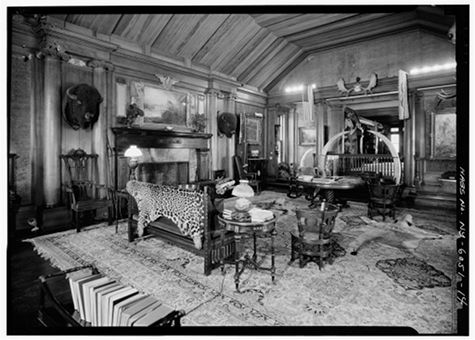 Theodore Roosevelt’s Trophy Room at Sagamore Hill
Theodore Roosevelt’s Trophy Room at Sagamore Hill
While male space was chipped away at during the 18th century, there were some consolations. During the Victorian Era, upper and middle class homes were built with several gender specific rooms. These rooms were often divided evenly among men and women. Women had sewing, drawing, and tea rooms; men had billiards, smoking, and trophy rooms. One peculiar male room in Victorian homes was the growling room. That’s right-growling room. Apparently growling rooms were a place a man could go to be alone and “growl” when in a bad mood. (I just use the bathroom for that now. )
This period of gender balance in homes would be short lived, however, and male living space would continue to shrink as women took more and more control over home life.
Suburban Living: The Elimination of Male Space
 Male space in the home was exchanged for family space.
Male space in the home was exchanged for family space.
The period after WWII was filled with dramatic changes in American life. One of the most powerful changes was the migration of white, middle class families from cities to the suburbs. Large developments like Levittown provided returning vets a chance to buy a piece of the American Dream for a relatively affordable price and get started on raising a family.
The rise of suburban culture with its emphasis on creating a domestic nest, usually meant sacrificing male space for the good of the family. Home designs in the 1950s exchanged the numerous, smaller rooms of the Victorian home for fewer, larger rooms. The goal was to create more open space where families could congregate together and bond while watching the Honeymooners on TV.
With no room to call their own, men were forced to build their male sanctuaries in the most uninhabitable parts of a home. Garages, attics, and basements quickly became the designated space for men, while the women and children had free reign over the rest of the house.
Men filled these rooms with interior design and the trappings of manliness- animal heads, discarded furniture, and pictures of sports figures (or women) would adorn the room. They would use their “man caves” as a place to retreat to when the demands of work and family life felt suffocating. Here they could play cards with their friends or tinker around, working on their car, reading the paper, or doing some woodworking.
But even these undesirable areas of the home would be taken away from men. Basements and attics became game or entertainment rooms to be used mainly by children. And even the least feminine of all places-the garage-would be cleaned up and domesticated.
According to Andreas Duany, an architect and consultant for the New Urban Development, three things occurred that feminized the garage: 1) sheetrocking, 2) the emergence of the storage industry, and 3) home association requirements to keep garage doors closed.
To organize their garages, men had built their own system of workbenches and shelving. But women felt this amateur, rustic solution was still too cluttered. Everything must now be put away in sleek, manufactured cabinetry and plastic storage tubs, with all of a man’s tools and knickknacks hidden away behind a shiny facade.
Sheetrocking covered the once unexposed and manly wood frame in garages, resulting in garages that looked less like a garage and more like another room inside the house.
Finally, homeowner association guidelines that required garages to remain closed made an already inhospitable room even less desirable by shutting out the light and air.
With every room co-opted in the house by women or children, and with few bastions of manliness in the public sphere left standing to escape to, men were relegated to claiming a solitary chair as their designated male space. (Think Archie Bunker and the dad from Frasier.)
Even in a time where men and women are supposed to decide about home décor together, dimes to donuts the women makes the final call. Take the cliché joke of a couple moving in together. It’s usually the man who has to throw out his “silly man things” to make room for the more sophisticated tastes of the women. At that moment, a man realizes that there’s no hope for him to have a place of his own.
Why Male Space is Important
Alright. So you might be thinking, “What’s the big deal? Isn’t it a good thing we’ve gotten past this archaic gender segregated stuff?” Yes… and no. Don’t get me wrong. I’m all in favor of the progress we’ve made, but again, the pendulum has arguably swung too far to the other extreme, leaving men without their own space.
We often underestimate the effects our surroundings have on our psyche. Architects, interior designers, and feng shui experts understand this profound impact. Even famous feminist writer Virginia Woolf understood the importance that space can have on an individual.
In her 1928 essay A Room of One’s Own, Woolf passionately argued that the reason women hadn’t produced as many great literary works as men was because they were denied the same opportunities afforded their male counterparts. The central argument in her essay was that women needed a room of their own in a world that was predominantly male so they could be alone and connect with their true identity and creative impulses.
Eighty years later, it’s the men asking for a room of their own.
Just as male friends play an important role in giving men satisfaction and in shaping their manliness, so does male living space. It’s important that men have a place where they can take off their social masks and revel in masculine energy. For many men, the bureaucracy of corporate culture can leave them feeling powerless and emasculated. Having a “man cave” at home, a place men can deocrate as they please and do what they want in can give them a much-needed sense of control, empowerment, and of course relaxation. And spending time in the company of other men at an all-male hang out can help a man reconnect with his manliness
It seems in the past 10 years or so businesses and home designers are starting to recognize the importance of male space. Cottage industries have sprung up dedicated to designing personalized “man caves” in homes, and many a man dreams of building a tiny house in the woods or backyard. Barbershops are coming back in a big way, and men of my generation are becoming interested in joining fraternal lodges like the Masons. Some pioneering men are even starting clubs of their own. After a period of decline, I think we’re seeing the start of a renaissance in male space. With all that’s going on, now is a better time then ever to carve out your own inner sanctum of manliness. So get to it. Your man cave awaits.


